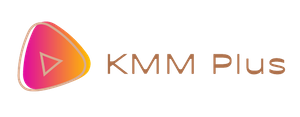I´ve been studying evolutionary theory recently, and how it applies to non-biological entities, such as buildings and businesses. This is the first of what will probably be a short series of blog posts providing new, or deeper insights into the application of evolutionary change in organizations.
I´ve been studying more evolutionary theory recently, and how it applies to non-biological entities, such as buildings and businesses. This is the first of what will probably be a short series of blog posts providing new, or deeper insights into the application of evolutionary change in organizations.
When is it acceptable not to evolve?
It is a valid question to ask when a business doesn´t need to change. Some businesses can potentially be passed down through generations of a family with little modification, other than perhaps increased scale to support a larger number of family members: What they make and how they make it doesn´t really change. I´m typing this, in the Austrian Alps, and just 8km (5 miles) from where I am sitting there is a brewery that started 520 years ago – while the scale and the physical premises have changed slightly over that time, their product offerings and their process of production has hardly changed in 520 years. While they have a new building and new technology in their offices, and production equipment has changed every generation or so, as well as transportation and distribution technology has changed – trucks, not horses and carts – the core business, what they make and how they make it, hasn´t changed in 520 years.
So, some businesses are incredibly robust. When is this true? It turns out there is a fairly simple formula to determine robustness.
Are we robust without any need to evolve?
Can you answer ¨yes¨ to the following five questions…
- Do you know your customers´ purpose(s)?
- Are your products and services fit-for-purpose?
- Are those purposes so fundamental to the human condition that they are unlikely to change in generations?
- Is the technology and method of production involved in fulfilling the customer´s purpose essentially the same as it was 20, 50, 100, 200, 500 years ago?
- Is your product and service largely robust to fashion trends and fickle customer preference?
If you can answer yes to all 5 questions then perhaps you are a brewery making beer to the German, Reinheitsgebot standard, adopted across Bavaria in 1516.
And I imagine that a boss of a brewery reading this would still be insisting that ¨nothing stands still¨ and ¨we are always changing. ¨
What can we learn from this formula for a robust business?
Firstly, if you don´t know your customer´s purpose for doing business with you, you cannot assume you are robust – instead you are flying blind, those customers could disappear tomorrow and you won´t know why. Discovering customer purpose is your first step to robustness.
Secondly, if you aren´t yet fit-for-purpose you need to evolve and improve until you are. Unfit for purpose you are exposed and fragile.
You need to discover your customer´s fitness criteria – the evaluation criteria they use to determine whether or not your product or service is good enough to meet their needs and expectations. Without these criteria you are still blind – you don´t know what to improve or in which direction you must go.
Thirdly, evolution is purpose driven. Building change because their usage changes – their purpose changes. Businesses change because their purpose changes – their mission, their vision, their goals, and objectives change.
Fourthly, products and services offered by businesses change, because, either (a) their customers´ purposes changed, (b) the technologies involved in producing or delivering the product or service has changed, or at least a better and more convenient, cheaper, or more reliable means of production and distribution has emerged.
And finally, fashions change – people get bored of the color. If there are multiple means of fulfilling a customer need, if there are several choices that are fit-for-purpose, then selection will drift from one choice to another over time. Human nature is that we are pack animals, some lead and many follows. When it is hard to choose because there are so many good choices, people will follow someone else´s lead, especially if there is a perceived membership or status within a social group for following that lead. Fashions change because of human nature. People like to switch things up a bit. If your business only offers black (as Henry Ford once did for his Model T car), then another business that offers multiple colors will win when fashions change. To be resilience to fickle fashion, you need enough scale to, figuratively speaking, offer all the colors.
Conclusion
If you don´t have these five things, then your business needs to change and improve – it needs to evolve. If your business is to avoid fragility and the risk of extinction then you need to know how to lead and manage evolutionary change, you need to wire your business to evolve and to be continually fit-for-purpose.
What now?
We have codified the means to evolve and sustain a resilient, robust, adaptive, fit-for-purpose business with the Kanban Method, the Fit-for-Purpose Framework, and the Kanban Maturity Model. You can learn how to lead and manage your organization, how to wire it for evolutionary change, to survive, thrive and remain successful, by taking our training and progressing up our ladder of career credentials. Check our listings for forthcoming online classes.



